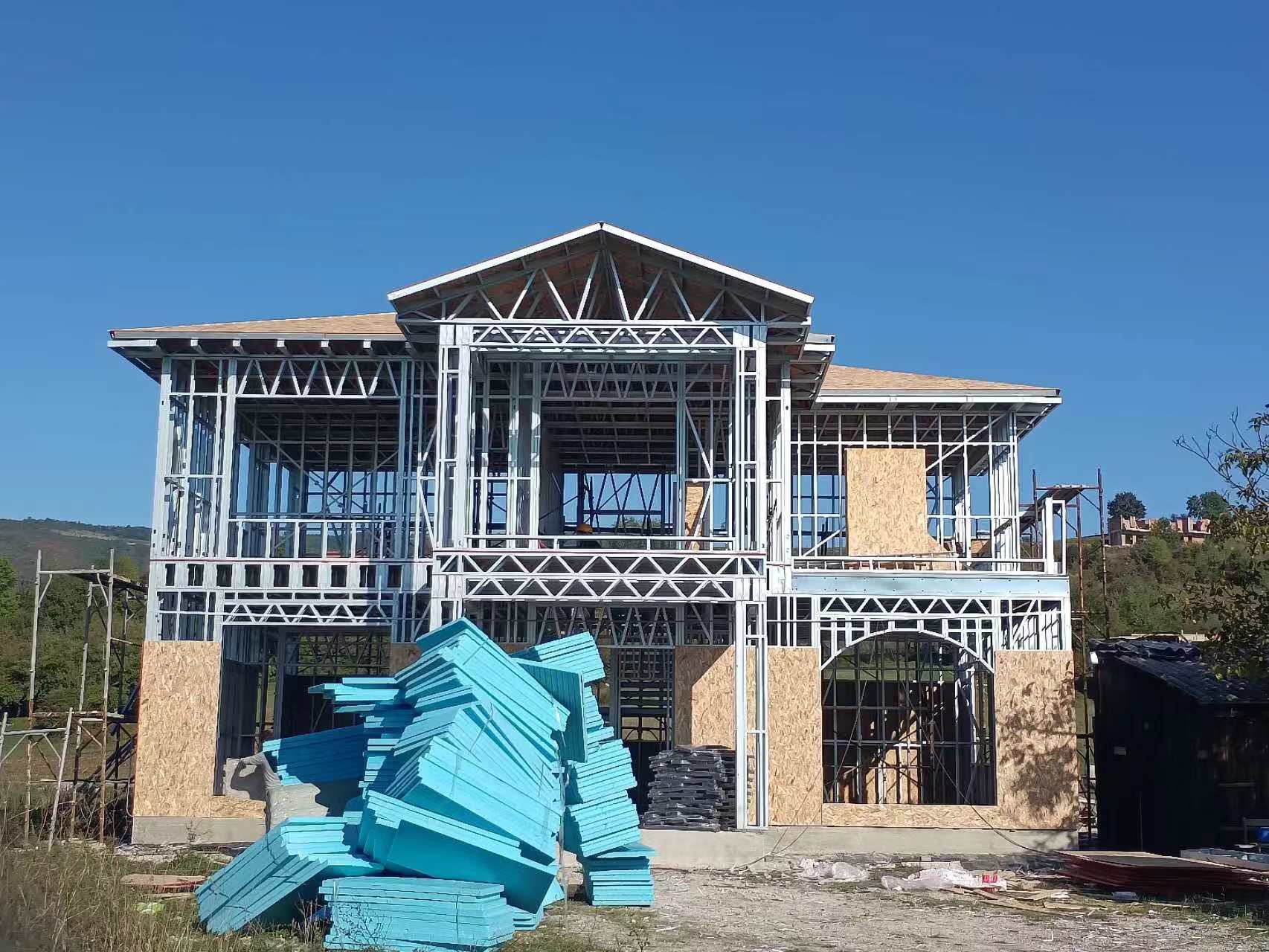Steel structure villas, celebrated for their modern aesthetics and resilience, are increasingly favored in contemporary architecture. However, their lifespan remains a pivotal concern for homeowners and investors. Drawing on 2025 industry data, technological advancements, and case studies, this article explores the factors determining the longevity of steel villas and strategies to maximize their durability.

1. Baseline Lifespan: Industry Standards and Real-World Performance
Under optimal conditions, steel structure villas can last 60–100 years, surpassing traditional wood-frame (30–50 years) and concrete homes (50–80 years). Key benchmarks include:
•ISO 15686-1: International standards classify steel structures as "long-life buildings" with a 75-year minimum design life.
•Case Study: A 1980s steel villa in Osaka, Japan, remains structurally sound after 45 years, with only minor cladding updates.
•2025 Global Construction Insights Report: 92% of steel villas built post-2010 are projected to exceed 70 years with proper maintenance.
2. Critical Factors Influencing Longevity
A. Material Quality and Corrosion Resistance
•Galvanization: Hot-dip galvanized steel (per ASTM A123) provides 75–100 years of rust protection in non-coastal regions.
•Advanced Coatings: Nano-ceramic coatings (e.g., 2024’s *NanoShield™*) extend corrosion resistance to 120+ years in harsh environments.
•Stainless Steel Hybrids: Using 316L stainless steel for coastal-area frameworks reduces saltwater degradation by 90%.
B. Structural Design Philosophy
•Modular Engineering: Prefabricated steel modules minimize onsite welding, reducing weak points that accelerate aging.
•Seismic Adaptability: Ductile steel frames complying with 2025 IBC Section 1603 withstand repeated earthquakes without cumulative damage.
•Load Redundancy: Multi-path load distribution (e.g., braced frames + moment-resisting joints) prevents localized stress fatigue.
C. Environmental and Climatic Challenges
| Threat | Impact on Lifespan | Mitigation Strategies |
| Coastal Salt Spray | Reduces lifespan by 20–30 years | Titanium alloy cladding; sacrificial anodes |
| Industrial Pollution | Acid rain corrodes joints | Epoxy-painted connections; annual pH washing |
| Desert Conditions | UV degradation of coatings | Ceramic-based UV-reflective finishes |

3. Maintenance: The Lifespan Multiplier
Proactive upkeep can extend a steel villa’s life by 25–40 years:
Biennial Inspections: Use AI-powered drones (e.g., *StructScan 2025*) to detect micro-cracks (<0.3mm) in hidden joints.
Coating Renewals: Reapply intumescent paints every 15–20 years to maintain fire and corrosion resistance.
Moisture Management: Install humidity sensors in wall cavities to prevent condensation-induced rust.
Foundation Monitoring: Laser-leveling checks every 5 years prevent uneven settling.
4. Technological Innovations Redefining Longevity
2025 breakthroughs are pushing steel villa lifespans toward 150+ years:
•Self-Healing Steel: Microcapsules filled with corrosion inhibitors (e.g., *AutoRepair Steel™*) automatically seal cracks.
•Carbon Capture Concrete: Steel-reinforced, CO2-absorbent foundations (per MIT 2024 Study) resist chemical erosion.
•Digital Twins: Real-time BIM models simulate decades of wear, allowing preemptive design adjustments.

Ruijie Steel Structure Villa Factory Building
5. Comparative Longevity: Steel vs. Alternatives
| Material | Average Lifespan | Achilles’ Heel |
| Steel | 60–100 years | High upfront corrosion prevention |
| Reinforced Concrete | 30–50 years | Rot, termites, fire vulnerability |
| Cross-Laminated Timber (CLT) | 40–60 years | Moisture warping in humid climates |
6. Regional Case Studies: Lifespan in Action
•Dubai, UAE: A 2005 steel villa with titanium-zinc cladding shows zero corrosion despite 20 years of 50°C summers and sandstorms.
•Queensland, Australia: Post-2030 cyclones caused 40% less damage to steel villas vs. timber homes, per 2025 Risk Assessment Bureau.
•Norway: Steel villas with geothermal heating systems exhibit 50% slower thermal fatigue compared to gas-heated counterparts.
Conclusion: Building for Centuries
The lifespan of a steel structure villa is not a fixed number but a function of material science, intelligent design, and disciplined maintenance. As 2025 technologies like self-monitoring alloys and carbon-negative materials mature, steel villas are transitioning from "long-lasting" to "multi-generational" assets. For investors, prioritizing ISO-certified contractors and 10-year maintenance plans ensures these homes outlive their initial projections.
Final Insight: The *2025 Steel Lifecycle Initiative* predicts that 40% of new steel villas will incorporate recycled aerospace-grade metals, combining sustainability with unparalleled durability.